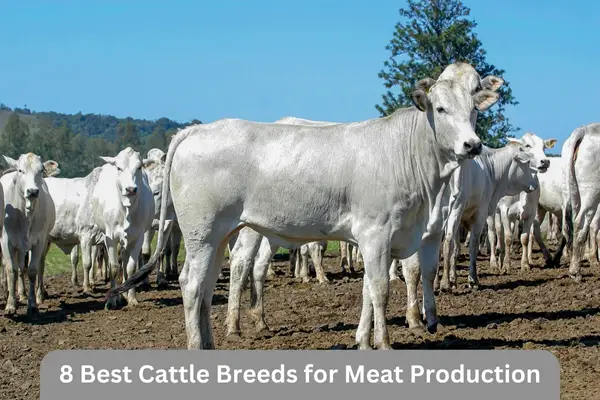Cattle Breeds for Meat Production
Raising cattle for beef production can be a profitable endeavor for ranchers. However, the breed of cattle plays a major role in determining meat quality, growth rates, feed efficiency, and carcass yield. Choosing the right beef cattle breed tailored to your environment and management system is key to maximizing productivity and profits.
After extensive research into growth rates, marbling, calving ease, climate adaptability, and more, we have compiled the 8 best cattle breeds for meat production.
1. Angus

Originating from Scotland, Angus cattle dominate the North American beef industry, making up over 60% of registered beef cattle. Often called Aberdeen Angus in Europe, they are prized for their high-quality marbled beef, delivering excellent tenderness and flavor.
Angus are naturally polled and solid black, though some cattle may have a small amount of white on their underline. They exhibit early maturity, reaching puberty and finishing weight sooner than other breeds.
Their average hot carcass weight ranges from 600-800 lbs with well-distributed intramuscular fat that earned Angus beef the Certified Angus Beef (CAB) brand.
While Angus have relatively smaller frame sizes compared to continental breeds, they compensate by utilizing feed more efficiently with higher dressing percentages. Angus calves also have low birth weights, enabling easier calving.
Hardy and adaptable, Angus thrive well across varied environments from the cold north to warmer regions, though they are intolerant to extreme heat. With docile temperaments, they are easier to handle than other English breeds.
All in all, Angus cattle offer high-quality marbled beef that finishes early on moderate rations, making them an excellent choice for beef production.
2. Hereford
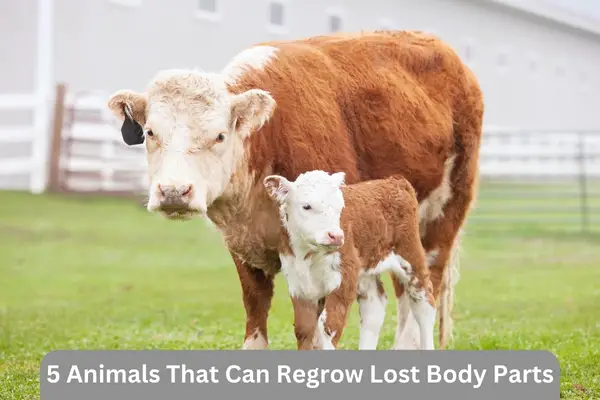
Hereford cattle are another docile English breed recognized by their reddish-brown coats and distinctive white faces, bellies, feet, and anklets. These hardy cattle excel in foraging abilities, doing well on pasture and cheaper roughage.
Herefords produce tender, flavorful beef with good marbling. Their ribeyes are regarded as the best among beef breeds. An early maturing breed, Herefords reach finish weights at around 12-15 months. Their dressed carcass weight ranges from 60-65%.
Exceptionally fertile and excellent mothers, Hereford cows calve easily and wean heavy calves, with a high percentage reaching full maturity. They are also long-lived, remaining productive over many years.
Herefords adapt well to varying climates and terrains, from deserts to cold environments. Their only limitation is high-humidity regions with greater parasite loads.
Overall, Herefords combine good beef qualities with fertility, calf growth and longevity, performing well in commercial crossbreeding programs.
3. Simmental
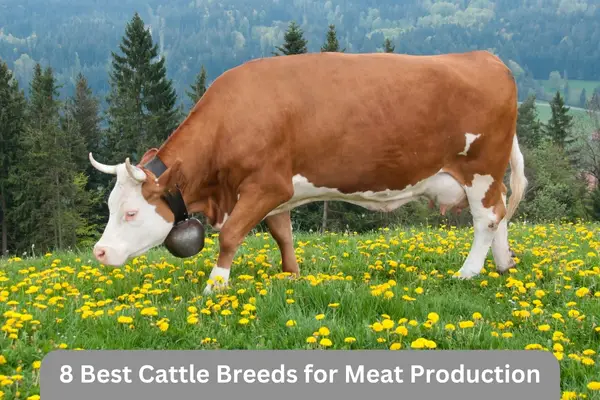
Originating in the Simme valley of Switzerland, Simmentals are among the oldest and most widely distributed cattle breeds globally. They are large, muscular cattle recognized by their distinctive color patterns of red, red and white, black, yellow or brown.
Simmentals are dual-purpose cattle selected for both milk and meat. Steers reach slaughter weights 60-120 days earlier than other breeds on grass-finishing programs with good daily weight gains of 2.5 to 4 lbs. Their well-muscled carcasses have good yields averaging 63-65%, though they have slightly less marbling compared to British breeds.
Simmental cows produce high milk volumes, enabling faster calf growth to weaning. They have excellent calving ease with relatively low birth weights. As highly fertile and long-lived breed, Simmental females have excellent longevity in breeding herds.
Simmentals adapt well to varied climates and environments from high elevations to extreme cold thanks to their double hair coat. Docile and easy calvers, Simmentals make great dams for crossing industrial beef operations.
4. Charolais
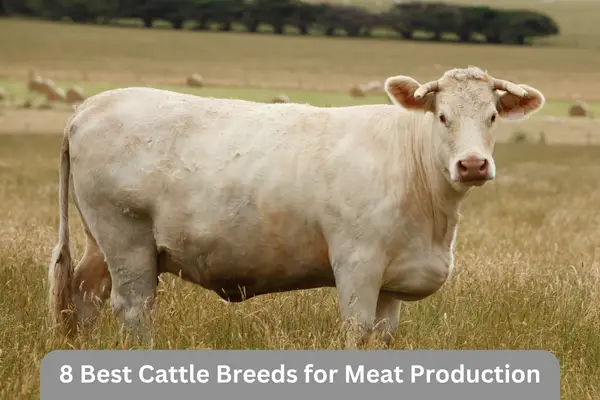
Originating in West-central to Southeastern France, Charolais are large, muscular white cattle prized for superior growth and carcass traits. Their high feed efficiency and lean meat make them ideal terminal sires.
Charolais gain weight rapidly at 3-4 lbs daily, reaching slaughter weights up to 30% faster than other breeds. Their heavy muscled carcasses have high cutability and yield averaging 63-67%, though they have less marbling.
While purebred Charolais calving can be difficult due to heavier birth weights, they excel in crossbreeding programs. Charolais-sired calves exhibit hybrid vigor, achieving higher weaning weights. The dilution of growth genes in subsequent generations also reduces calving difficulties.
Charolais cattle are extremely hardy, adapting well to cold winters and hot summers. They have an inquisitive nature and can jump fences, requiring secure enclosures.
For beef producers targeting lean yields over marbling, Charolais deliver superior growth and excellent carcass cutability ideal for the feedlot.
5. Gelbvieh

Developed in Bavaria, southern Germany, Gelbvieh (German for “Yellow Cattle”) are muscular, well-balanced cattle with red or golden brown coloring. Medium-framed and thick-bodied, Gelbviehs exhibit superior muscling and thickness throughout the rump, loin, and hindquarters.
Gelbvieh is an efficient, fast-growing breed with excellent feed conversion, daily gaining over 3 lbs on grass finishing programs. Their lean, well-muscled carcasses have good yields up to 63-67% with sufficient marbling. As docile cattle with birth weights up to 30lbs lighter than other continental breeds, Gelbviehs calve with ease.
Heat and parasite-resistant, Gelbviehs adapt well to warmer, humid climates with good longevity and fertility. Gelbvieh-cross calves also exhibit hybrid vigor, gaining faster with improved milking ability over pure English breeds.
For producers seeking fast-gaining terminal sires that yield well-muscled lean carcasses, Gelbvieh cattle make an excellent choice.
6. Brahman

Originating from India, Brahman cattle dominate beef production across tropical regions and South America. With loose skin and large droopy ears, Brahmans come in shades of gray and various color patterns of red and white. They are most recognized by the distinctive hump over their shoulders and neck.
Brahmans possess exceptional heat tolerance and insect resistance, allowing them to adapt and thrive in extremely hot, humid climates.
Their humps play a role in heat dissipation, shunting blood flow to dissipate body heat. Brahmans also have higher sweat gland density with slick, short hair coats.
Medium to large-framed cattle, Brahmans have excellent longevity and fertility, calving unassisted well into their teens. They produce lean, muscular carcasses on the grass with adequate marbling. As highly maternal dams, Brahman-crossed calves exhibit hybrid vigor with faster growth rates to weaning.
Where heat tolerance and tropical adaptability are required, Brahman genetics confer the exceptional ability to withstand sweltering temperatures, parasites and tropical diseases. Brahman-cross females also make excellent dams.
7. Beefmaster
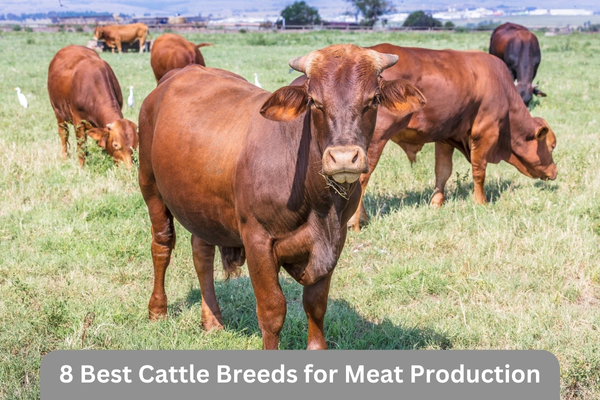
Developed in south Texas from 1908 to 1912, Beefmaster cattle were selectively bred from Brahman, Hereford and Shorthorn breeds. Solid red cattle with a touch of white, Beefmasters combine superior traits from all three foundation breeds.
With 3/8 Brahman and 5/16 Hereford-Shorthorn genetics, Beefmasters couple heat adaptability and hardiness of Brahmans with meat quality of British breeds. They are also highly fertile, are excellent mothers, and have lighter birth weights for ease of calving.
Beefmasters thrive in hot and arid climates and are resistant to insects, parasites, and disease. Their loose hide and skin pigment protects against harsh UV rays. As docile, social cattle, Beefmasters are also easy to handle.
While carcass weight and marbling may be less compared to Angus or Herefords on high grain rations, Beefmasters produce tender, flavorful beef finished solely on grass. Fast maturing, they reach slaughter weights sooner than Brahmans.
For grass-fed beef programs in hot climates, Beefmaster genetics enable cattle to achieve profitable weights without high inputs.
8. Brangus
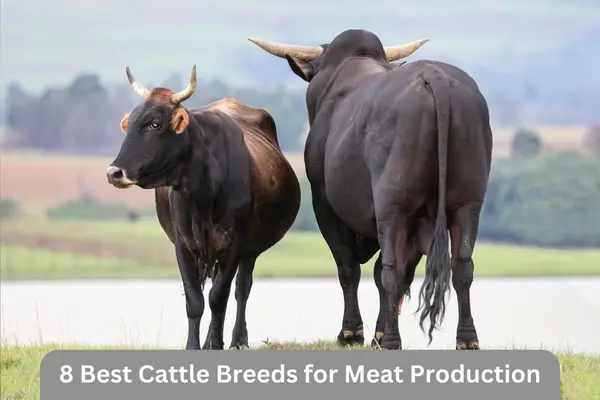
The Brangus breed was developed in the early 1900s in Louisiana by crossing Angus cattle with Brahman cattle, combining the best traits of adaptability, maternal ability, fertility, and carcass quality. Visually, Brangus cattle appear as solid black, polled cattle much like Angus but with loose Brahman-like skin.
With 3/8 Brahman and 5/8 Angus genetics, Brangus cattle couple heat tolerance and disease resistance of Brahmans with marbling ability and early maturity of Angus. As excellent foragers, Brangus cattle finish well on grass while maintaining feed efficiency comparable to Angus on grain.
Brangus females breed easily with high fertility, calving unassisted while raising heavy weaned calves. Although Brahman genetics contribute slightly higher birth weights, difficulties are still lower than other continental breeds.
Their black hides also confer added protection against sunlight compared to traditional red Brahman cattle. Brangus carcasses have excellent meat quality with ample marbling for the Certified Angus Beef program.
Where heat tolerance is paramount without compromising meat quality, Brangus cattle offer the best combination. Their hybrid vigor also enables adaptation across wider environments from tropical to temperate regions.
Conclusion
In Closing, The most profitable cattle breeds balance growth efficiency, carcass merit, and maternal ability with local climate suitability and feed resources.
Assessing these key factors can help determine the best breeds for your beef operation. Beyond that, strategic crossbreeding also enables you to capture additional hybrid vigor for even greater performance.

